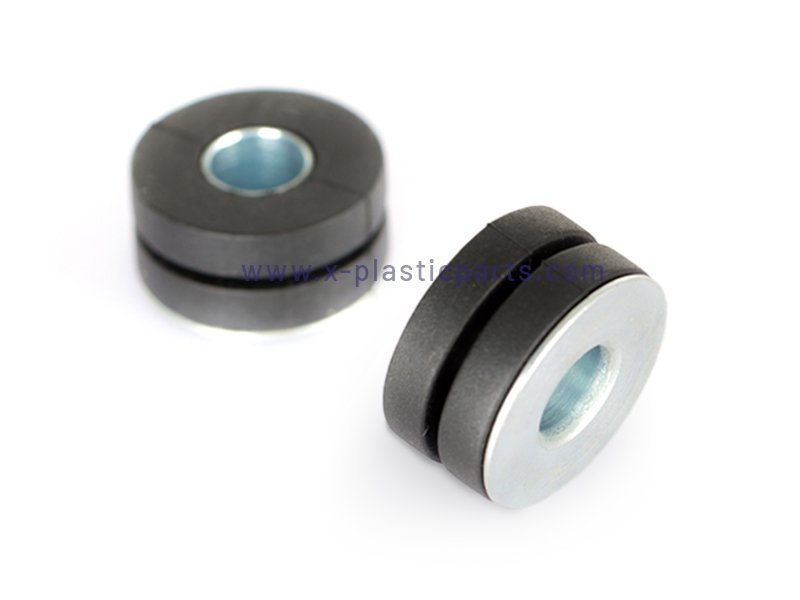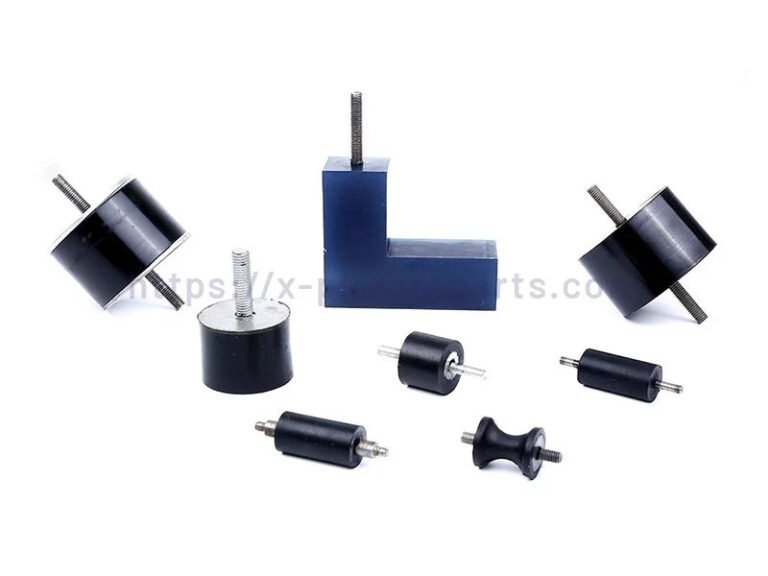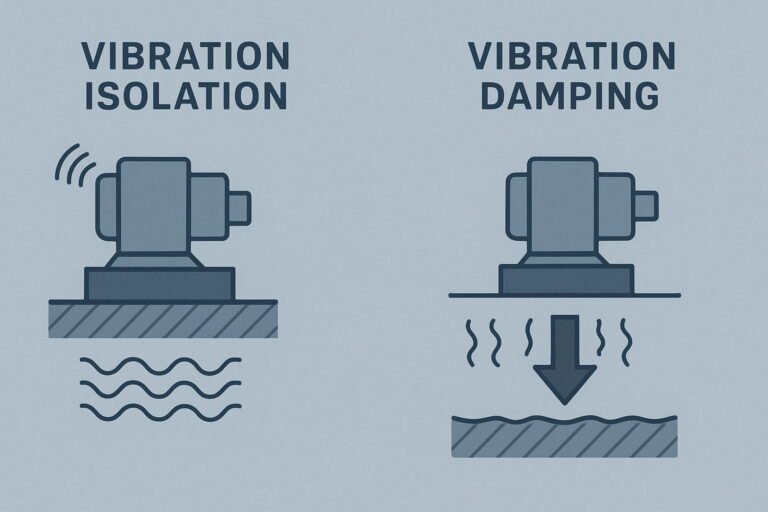Anti vibration mounts, also named vibration isolation mounts, is an important parts to reduce unwanted vibrations and noise generated by machinery. In this article, we will explore the basical information of anti bibration mounts.
What Are Anti Vibration Mounts?
Anti vibration mounts are mechanical components designed to isolate and reduce vibration and shock loads transmitted between machinery and their supporting structures. These devices act as a buffer, preventing the transfer of vibrational energy to surrounding structures, thereby protecting machinery, reducing noise, and enhancing operational efficiency. Anti-vibration mounts are typically fastened to the base or sides of machinery, providing a stable foundation.
These mounts are typically made from rubber vibration mounts, or blends of rubber and other materials, including stainless steel and thermoplastic elastomers . Rubber is favored for its exceptional vibration damping and rubber vibration damping properties while TPE offers tear resistance, flexibility, and impact strength.
In addition, custom vibration mounts can be designed to meet specific requirements, offering tailored solutions for optimal vibration isolation in unique machinery or environments.
Types of Anti-Vibration Mounts
The diversity of anti-vibration mounts ensures a solution for every application. Below are the most common types of vibro mounts and their applications:
- Sandwich Mounts: These vibration isolation mounts feature rubber layered between metal plates, providing robust support for high-impact environments. Used in rail bogies and construction machinery, rubber vibration mounts like these excel at absorbing heavy loads and shocks.
- Rubber Mounts: Versatile and cost-effective, anti-vibration rubber mounts (often called bobbin or cylindrical mounts) are ideal for static applications like generators, HVAC systems, and pumps. Their rubber vibration damping properties make them a go-to choice for general-purpose vibration control.
- Spring Mounts: Designed for low-frequency vibrations, these vibro mounts use steel springs to isolate heavy machinery like compressors and HVAC units. Vibration mounts of this type offer excellent isolation for equipment with significant low-frequency disturbances.
- Cone and Shear Mounts: Engineered for multi-directional vibrations, these antivibration mounts are suited for mobile applications in automotive and marine industries. Their unique design allows rubber isolation mounts to handle both compressive and shear forces, making them ideal for dynamic environments.

Why Are Anti-Vibration Mounts Important?
Anti-vibration mounts are crucial for preventing equipment damage, reducing maintenance costs, minimizing operational downtime, and mitigating noise pollution. Without them, vibrations can lead to fastener loosening, premature wear of components, and misalignment, increasing the need for frequent repairs. Additionally, vibrations may cause noise disruptions, create safety hazards, and result in non-compliance with regulatory standards like OSHA or ISO, affecting both efficiency and profitability.
Advantages of Anti-Vibration Mounts
Anti-vibration mounts offer a range of benefits By incorporating vibration mounts into machinery:
Extended Equipment Lifespan: Rubber vibration mounts absorb dynamic forces, reducing stress on components like gears and bearings, thereby prolonging machinery life.
Noise Reduction: Vibration isolation mounts minimize noise transmission in industrial settings.
Enhanced Machine Performance: Antivibration rubber mounts support stable equipment, operates with greater accuracy and efficiently.
Improved Operator Comfort: By reducing vibration exposure, vibro mounts decrease fatigue, boosting productivity and reducing error rates among operators.
Versatility Across Industries: From automotive to renewable energy, anti-vibration mounting solutions adapt to diverse applications, including marine engines, HVAC systems, and defense equipment.
Environmental Resilience: Materials like nitrile and silicone in rubber vibration isolator mounts resist oils, UV, and extreme temperatures, ensuring reliable performance in challenging conditions.
Ease of Installation: Many rubber vibration mounts and antivibration mounts feature threaded fittings for quick, secure attachment.
Step-by-Step Guide to Choosing Anti-Vibration Mounts
Selecting the right anti-vibration mounts requires careful consideration to ensure optimal performance.
- Determine Equipment Weight: Calculate the total weight of the machinery and decide the number of mounts based on weight distribution.
- Assess Load Distribution: Check the equipment’s center of gravity to ensure even load across rubber vibration mounts. Divide the machine’s weight by the number of mounts to determine individual load requirements.
- Measure Operating Speed (RPM): Identify the machine’s forcing frequency (normal operating speed) and idle speed to select anti-vibration rubber mounts that avoid resonance and maximize isolation. Find the forcing frequency by converting rotational speed (RPM) into Hertz (Hz).
- Calculate Static Deflection: Measure the mount’s compression under load. For instance, a 12 mm mount compressing to 10 mm has 2 mm deflection, impacting isolation efficiency.
- Select Mount Material and Types: Choose materials based on environment. Match mount stiffness and design to the measured load and vibration frequency for effective performance.
- Consider Installation Requirements: Ensure ancillary connections such as pipework and ducting are flexible to prevent stress on mounts. Look for mounts with threaded fittings or flanges compatible with the installation setting.
Conclusion
Flexiparts provides custom anti vibration mounting solutions designed to meet diverse industrial needs. The expertise ensures the different materials and types custom solutions. Contact Flexiparts today for tailored, reliable anti vibration mounts.




